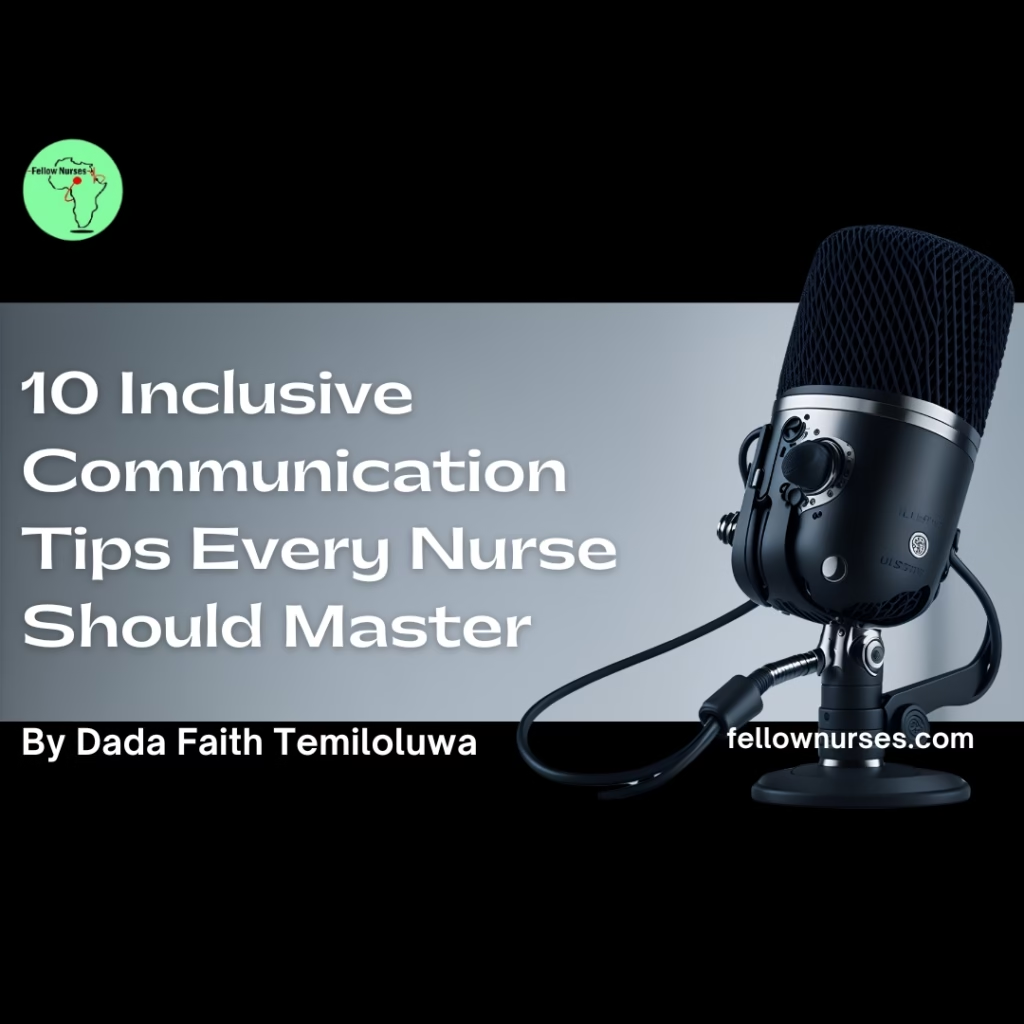By Dada Faith Temiloluwa • 10 November, 2025

Nurses are majorly communicators; from providing psychological support, to giving health education on diet and lifestyle modification, to serving medications, every shift is full of communication.
It is therefore important that nurses gain mastery of certain tips that would help to make communication easier and more productive during patient care.
Here are 10 communication tips that should be included in every nurse’s conversation.
1. LISTEN ACTIVELY ALL THE TIME: Do not just listen with the intention to respond; listen to understand. Pay full attention to the patient and listen without interrupting until the patient is done with speaking.
2. NONVERBAL COMMUNICATION SPEAKS LOUDER: Beyond your words, patients are constantly scanning your expressions to determine acceptance. Ensure you maintain an open posture (don’t cross your arms), a pleasant facial expression and encouraging nonverbal cues like nodding.
3. RESPECT EVERY ONE’S IDENTITY: Don’t assume that because a woman is putting on wedding bands, she would want to be addressed as “Mrs”. Always ask patients how they prefer to be addressed (names or pronouns) and use that language consistently and respectfully. Also, ensure each nonverbal cues is tailored based on the patient’s culture and tradition. For example, touch carries different meanings in different cultures.
4. BE CONCISE: Use simple, easy-to-understand language that clearly conveys your message when speaking to patients. Avoid the use of medical jargons and if you must use them, be ready to explain thoroughly.
5. USE TEACH-BACK METHOD TO CONFIRM UNDERSTANDING: Asking a patient “Do you understand all I have said?” can be intimidating and make the patient affirm even if he/she doesn’t. Instead, ask them to repeat what you have said in their own words. This would ensure proper comprehension and prevent misunderstanding of information.
6. ASK OPEN-ENDED QUESTIONS: You can stimulate dialogue by avoiding questions that only elict a “yes” or “no” answer. Instead, encourage them to go on by asking “how”, “where”, “tell me about it” to help them express themselves fully.
7. PRACTICE CULTURAL HUMILITY: It is important to always remember that everyone has different cultural beliefs and assumptions. Do not be quick to enforce your own beliefs on the patients. Instead, listen and learn about each patient’s uniqueness and see how you can tailor your communication around it rather than making generalizations.
8. MAKE PROVISIONS TO BRIDGE LANGUAGE BARRIERS: As much as possible, use professional interpreters in cases of language barriers instead of relying on the relatives or random bilingual staffs. This would help to maintain confidentiality and accuracy of information.
9. MAINTAIN PATIENT’S PRIVACY: Before you proceed on sensitive matters, information sharing and decision making, clarify who the patient would want to be involved or not. Do not make assumptions involving family members without the patient’s agreement.
10. SPECIFIC STYLES FOR SPECIFIC GROUPS: Your communication style should depend on the specific needs or group of the patient. When talking to a child, you might want to use pictures or simpler terms than speaking to an adult. You might have to face someone with an hearing impairment directly and speak slowly so they can read your lips. It is important to acknowledge the peculiarity of each patient before starting out.
Communication is an ongoing process that requires constant practice. Each patient is unique and should always be treated as such. Even when you are communicating with other nurses or professional colleagues, you must learn to respect other people’s views and opinions.
We would love to hear from you. What other tips do you think nurses must possess to improve their communication?









